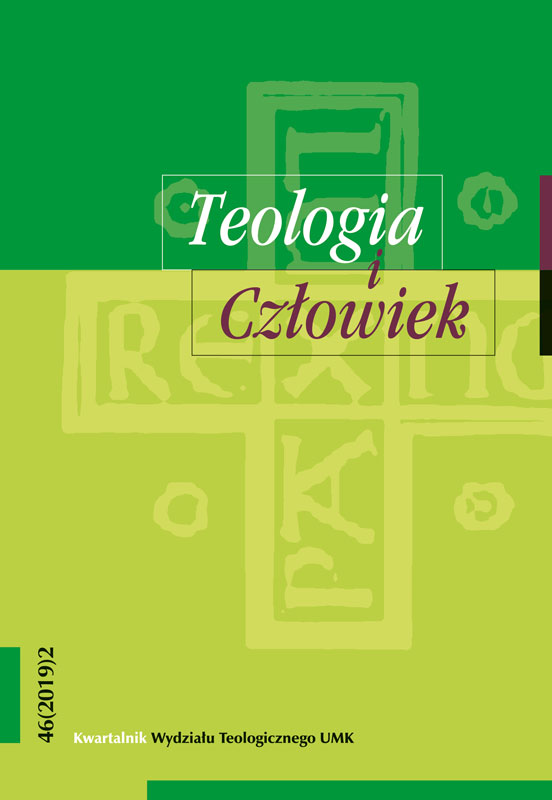Influence of Catholic School on Development of Education in Poland
DOI:
https://doi.org/10.12775/TiCz.2019.015Słowa kluczowe
szkoła katolicka, prawo oświatowe, organ prowadzący szkoły, pracownik szkoły katolickiej, uczeń szkoły katolickiej, misja szkoły katolickiej, Karta NauczycielaAbstrakt
Szkolnictwo katolickie cieszy się od wieków zaufaniem w wielu krajach świata. Kościół katolicki na przestrzeni wieków ma duże osiągnięcia w dziedzinie edukacji. W Europie w takich krajach, jak Belgia, Francja, Holandia ponad połowa wszystkich szkół to szkoły katolickie. Trzeba jednak pamiętać, że w tych krajach nie zlikwidowano szkolnictwa katolickiego ze względów politycznych, jak to było w Europie Środkowo-Wschodniej, w tym w Polsce, gdzie szkolnictwo katolickie zostało po II wojnie światowej zlikwidowane z powodów ideologiczno-politycznych.
W niniejszym artykule został przedstawiony wpływ szkoły katolickiej na rozwój edukacji w Polsce. Szkoły katolickie realizują swoją misję edukacyjną i wychowawczą w określonym miejscu i czasie. Początki szkolnictwa katolickiego w naszym kraju sięgają XIII wieku. Były to najpierw pojedyncze elitarne placówki tworzone przy katedrach, klasztorach i parafiach. Miały one charakter przede wszystkim religijny, moralny i patriotyczny.
Celem tego artykułu jest próba przybliżenia troski Kościoła o dzieci i młodzież, by były kształcone i wychowywane zgodnie z wartościami chrześcijańskimi. Artykuł ukazuje, że szkolnictwo katolickie w Polsce odbudowuje się od roku 1989, wówczas było tylko 11 szkół katolickich (w tym 9 liceów ogólnokształcących i 2 szkoły zawodowe), a w roku 2018 było już 610 szkół katolickich, edukujących na różnych etapach kształcenia – szkoły podstawowe, gimnazja, licea, technika i szkoły zawodowe. Są to szkoły bardzo dobre, osiągające wysokie wyniki w nauce, dbające o bezpieczeństwo dzieci i młodzieży, chętnie wybierane przez rodziców i ich dzieci. To prawda, że nikt nie zastąpi rodziców w wychowaniu dzieci, ale szkoły katolickie chętnie wspierają ich, troszcząc się o integralny rozwój młodego człowieka. Niewątpliwie działalność dydaktyczna i wychowawcza szkół katolickich w naturalny sposób wpisuje się w posłannictwo Kościoła, przybliżając osobę Jezusa Chrystusa i Jego Ewangelię. Takie motywy przyświecają tym, którzy powołują do istnienie i prowadzą szkoły katolickie w Polsce.
Bibliografia
Andrzejewski R., Witając w progach odrodzonego Długosza, Włocławek 2001.
Bilicka B., Nauczyciel szkoły katolickiej. Wychowanie do dialogu i tolerancji, „Ateneum Kapłańskie” 149 (2007), pp. 464–476.
Cichosz W. (red.), Formacyjna rola szkoły katolickiej, Gdynia 2007.
Interdiözesaner Katechetischer Fonds (Herausgeber), Katolische Schulen in Europa. Innovation ist unsere Tradition, Wien 2015.
Janeczek S., Komisja Edukacji Narodowej, in: Encyklopedia katolicka, Lublin 2002, vol. 9, col. 449–455.
Jeż S., Rada Szkół Katolickich – organizacja wspomagająca wychowanie w szkołach katolickich, „Ateneum Kapłańskie” 149 (2007), pp. 498–503.
Kędzierski J., Ksiądz Jan Długosz – wychowawca i nauczyciel, patron włocławskiej szkoły katolickiej, „Zapiski Kazimierzowskie” 15/2015, pp. 122–135.
Litak S., Historia wychowania, vol. 1, Kraków 2005.
Maj A., Szkolnictwo katolickie w III RP (1989–2001), Warszawa 2002.
Poniewierski J. (red.), Służyć wzrastaniu w prawdzie i miłości. Wybór dokumentów Kościoła na temat szkoły katolickiej i wychowania, Kraków 2009.
Rada Szkół Katolickich, Informator adresowy szkół katolickich w Polsce, Warszawa 2017.
Ziemkiewicz M., Historia Zakładu Naukowo-Wychowawczego im. ks. Jana Długosza we Włocławku w latach 196–1949, Włocławek 2001.
Pobrania
Opublikowane
Jak cytować
Numer
Dział
Licencja
CC BY ND 4.0. Posiadaczem prawa autorskiego (Licencjodawcą) jest Autor, który na mocy umowy licencyjnej udziela nieodpłatnie prawa do eksploatacji dzieła na polach wskazanych w umowie.
- Licencjodawca udziela Licencjobiorcy licencji niewyłącznej na korzystanie z Utworu/przedmiotu prawa pokrewnego w następujących polach eksploatacji: a) utrwalanie Utworu/przedmiotu prawa pokrewnego; b) reprodukowanie (zwielokrotnienie) Utworu/przedmiotu prawa pokrewnego drukiem i techniką cyfrową (e-book, audiobook); c) wprowadzania do obrotu egzemplarzy zwielokrotnionego Utworu/przedmiotu prawa pokrewnego; d) wprowadzenie Utworu/przedmiotu prawa pokrewnego do pamięci komputera; e) rozpowszechnianie utworu w wersji elektronicznej w formule open access na licencji Creative Commons (CC BY-ND 3.0) poprzez platformę cyfrową Wydawnictwa Naukowego UMK oraz repozytorium UMK.
- Korzystanie przez Licencjobiorcę z utrwalonego Utworu ww. polach nie jest ograniczone czasowo ilościowo i terytorialnie.
- Licencjodawca udziela Licencjobiorcy licencji do Utworu/przedmiotu prawa pokrewnego nieodpłatnie na czas nieokreślony
PEŁEN TEKST UMOWY LICENCYJNEJ >>
Statystyki
Liczba wyświetleń i pobrań: 567
Liczba cytowań: 0



